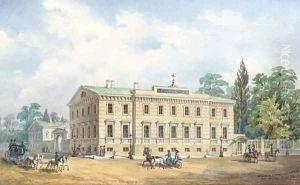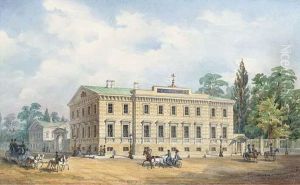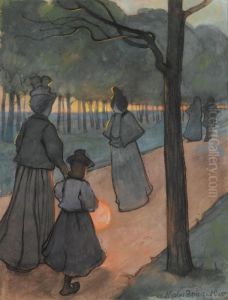Nikolaj Leontjewitsch Benois Paintings
Nikolaj Leontjewitsch Benois, born in 1901 into the illustrious Benois family, was a Russian-Italian architect, stage designer, and member of the renowned Benois artistic dynasty that left a significant imprint on 19th and 20th-century art and architecture. The Benois family, with its roots deeply embedded in the cultural and artistic fabric of Russia, contributed variously as painters, architects, and designers, significantly influencing the Russian Silver Age of the arts. Nikolaj, carrying forward this legacy, emerged as a prominent figure, particularly known for his work in theatre design and architecture.
Educated in Italy after his family left Russia following the 1917 Revolution, Nikolaj's upbringing and education in such a culturally rich environment profoundly influenced his artistic sensibilities. His work is characterized by a blend of traditional Russian artistic values and the modernist trends that were sweeping through Europe in the early 20th century. He was particularly adept in stage design, where his innovative and imaginative approaches to scenery and costumes won him acclaim in the realms of opera and ballet.
Throughout his career, Benois collaborated with some of the most prestigious theatres and opera houses in Europe, including La Scala in Milan and the Royal Opera House in London. His designs for ballets and operas often featured elaborate and detailed sets that transported audiences to fantastical worlds, underpinning the narrative and emotional depth of the performances. His architectural work, though less known, also reflects a keen understanding of space and an ability to integrate modernist principles with classical beauty.
Nikolaj Leontjewitsch Benois passed away in 1988, leaving behind a legacy of artistic contributions that continue to be studied and admired. His work remains a testament to the enduring influence of the Benois family on the arts, bridging the gap between Russian tradition and Western modernism.



